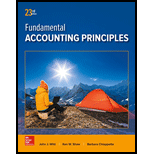
Concept Introduction:
Accounting for recognition of receivables in IFRS and U.S GAAP
Accounting for recognition of receivables in IFRS:
IFRS recognize receivables using the realization principle and an earnings process since receivables are arising from the revenue generating activity. In IFRS, the arm’s length principle is not followed as it is followed in the US GAAP for realization principle. Rather, in IFRS, this notion is applied in terms of reliable measurement and probability of economic benefits.
Accounting for recognition of receivables in US GAAP:
US GAAP uses the same asset criteria as IFRS. The realization principle as per US GAAP implies an arm’s length transaction occurs. This is how, the recognition of receivables is done under US GAAP.
Accounting for valuation of receivables in IFRS and U.S GAAP
Accounting for valuation of receivables in IFRS:
IFRS requires companies to report receivables net of estimated uncollectible allowances. Only allowance method will be needed for uncollectible account. The allowance method can use the following methods to estimate uncollectible accounts –
• Percent of receivables
• Percent of sales
• Aging method
Accounting for valuation of receivables in US GAAP:
Same like IFRS, US GAAP requires companies to report receivables net of estimated uncollectible allowances. Only allowance method will be needed for uncollectible account. The allowance method can use the following methods to estimate uncollectible accounts –
• Percent of receivables
• Percent of sales
• Aging method
Requirement 1
To explain:
How the accounting for recognition of receivables is different between IFRS and US GAAP.
Requirement 2
To explain:
How the accounting for valuation of receivables is different between IFRS and US GAAP
Want to see the full answer?
Check out a sample textbook solution
Chapter 9 Solutions
Fundamental Accounting Principles
- Babel Ltd uses predetermined overhead rates based on labor hours. The monthly budgeted overhead is $450,000 and the budgeted labor hours were 90,000. During the month the company worked a total of 70,000 labor hours and actual overheads totaled $200,000. The overhead at the end of the month would therefore be$?arrow_forwardFor Bears Company, the predetermined overhead rate is 125% of direct labor cost. During the month, Bears incurred $143,500 in factory labor costs, of which $118,600 is direct labor and $24,900 is indirect labor. The actual overhead incurred was $159,800. Compute the amount of manufacturing overhead applied during the month. Determine the amount of under- or overapplied manufacturing overhead.arrow_forwardWhat are the annual after-tax cash receiptsarrow_forward
- Can you explain this financial accounting question using accurate calculation methods?arrow_forwardA company acquires equipment, which has an estimated useful life of 8 years and no salvage value, for $48,000 at the beginning of the accounting period. What is the adjusting entry for depreciation at the end of one month if the company uses the straight-line method of depreciation?arrow_forwardCould you help me solve this financial accounting question using appropriate calculation techniques?arrow_forward
- Ash Corp. prepared a fixed budget of 70,000 direct labor hours, with estimated overhead costs of $350,000 for variable overhead and $90,000 for fixed overhead. Ash then prepared a flexible budget of 65,000 labor hours. How much are total overhead costs at this level of activity? Answerarrow_forwardYou believe the expected return on GANDHI is 12.50%, and that the variance of GANDHI's returns is 0.4900. What is the coefficient of variation for this company? Express the answer with 3 decimal places.arrow_forwardPlease provide the correct answer to this general accounting problem using accurate calculations.arrow_forward

 AccountingAccountingISBN:9781337272094Author:WARREN, Carl S., Reeve, James M., Duchac, Jonathan E.Publisher:Cengage Learning,
AccountingAccountingISBN:9781337272094Author:WARREN, Carl S., Reeve, James M., Duchac, Jonathan E.Publisher:Cengage Learning, Accounting Information SystemsAccountingISBN:9781337619202Author:Hall, James A.Publisher:Cengage Learning,
Accounting Information SystemsAccountingISBN:9781337619202Author:Hall, James A.Publisher:Cengage Learning, Horngren's Cost Accounting: A Managerial Emphasis...AccountingISBN:9780134475585Author:Srikant M. Datar, Madhav V. RajanPublisher:PEARSON
Horngren's Cost Accounting: A Managerial Emphasis...AccountingISBN:9780134475585Author:Srikant M. Datar, Madhav V. RajanPublisher:PEARSON Intermediate AccountingAccountingISBN:9781259722660Author:J. David Spiceland, Mark W. Nelson, Wayne M ThomasPublisher:McGraw-Hill Education
Intermediate AccountingAccountingISBN:9781259722660Author:J. David Spiceland, Mark W. Nelson, Wayne M ThomasPublisher:McGraw-Hill Education Financial and Managerial AccountingAccountingISBN:9781259726705Author:John J Wild, Ken W. Shaw, Barbara Chiappetta Fundamental Accounting PrinciplesPublisher:McGraw-Hill Education
Financial and Managerial AccountingAccountingISBN:9781259726705Author:John J Wild, Ken W. Shaw, Barbara Chiappetta Fundamental Accounting PrinciplesPublisher:McGraw-Hill Education





